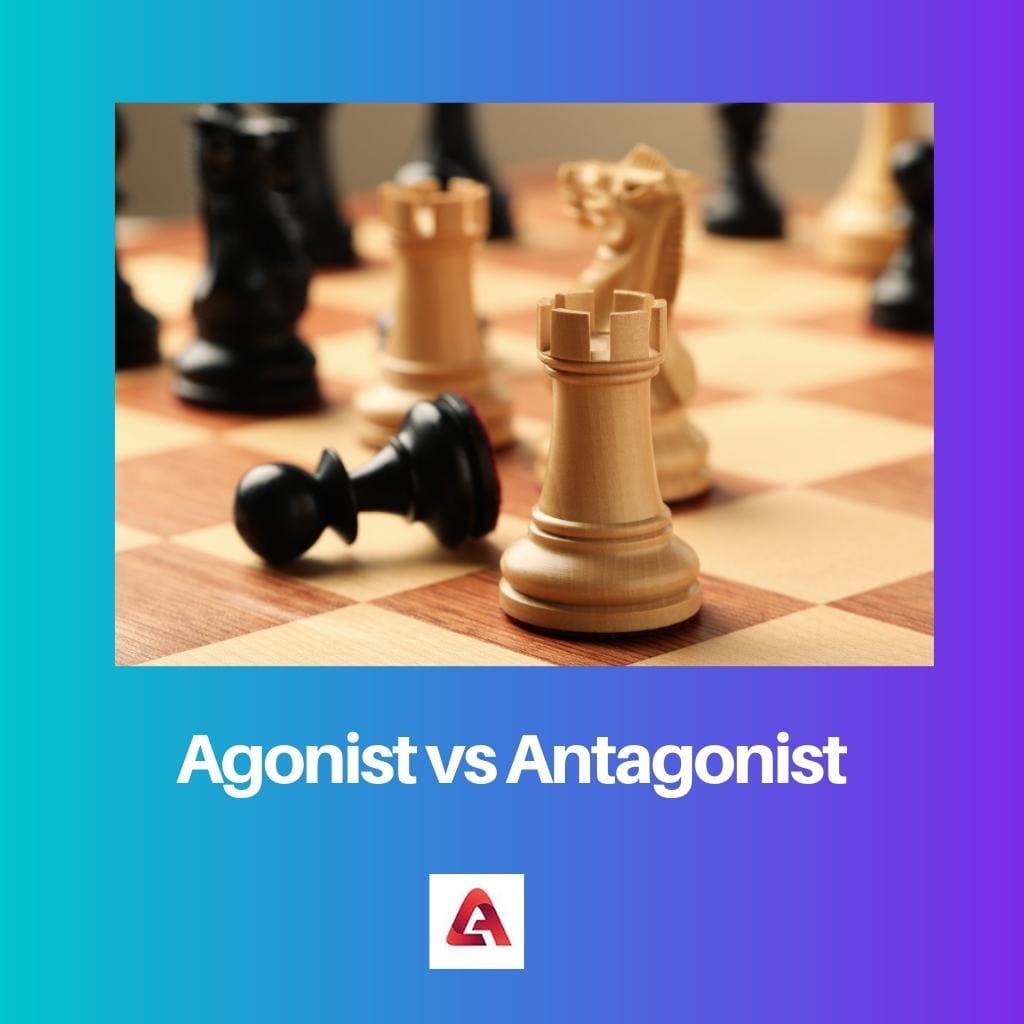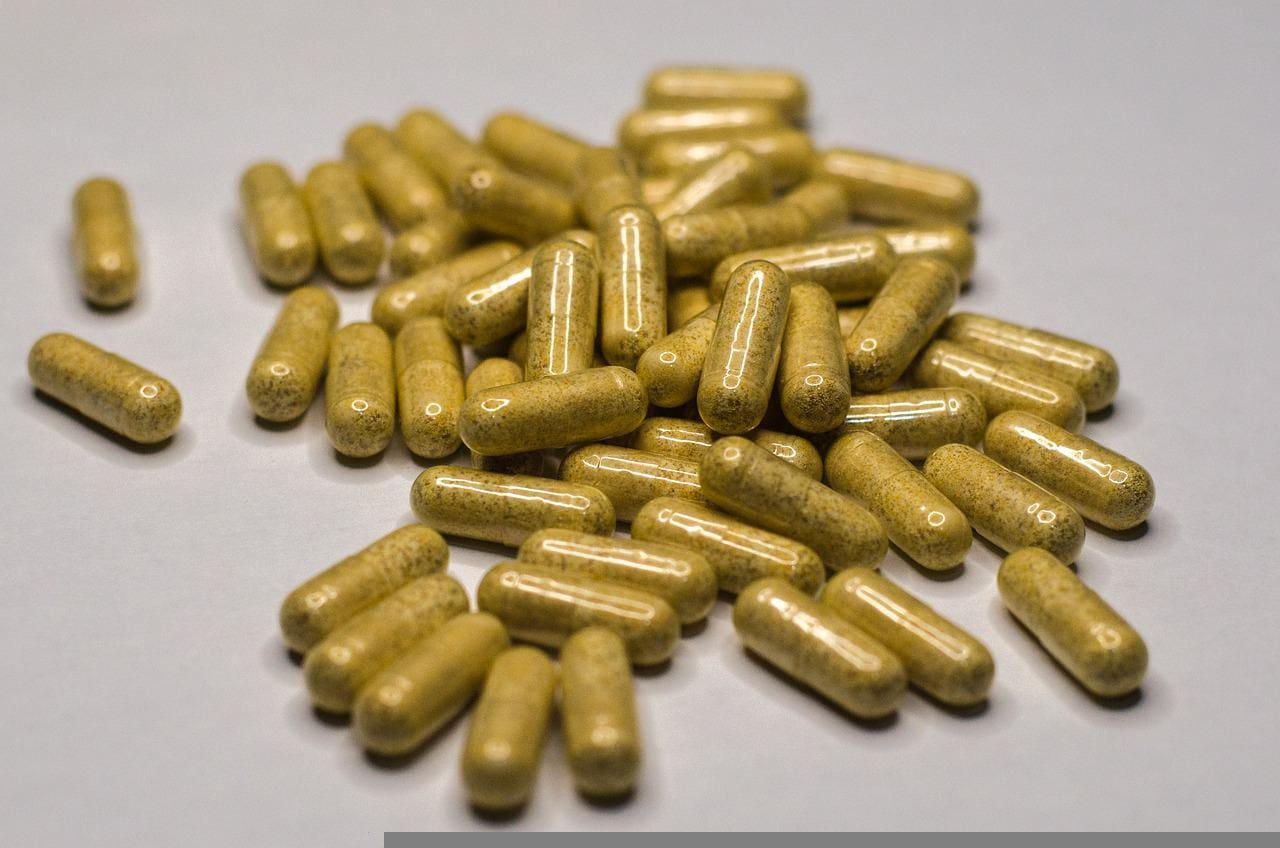Though the words agonist and antagonist differ in meaning depending on the context, these terms are more frequently used in pharmacodynamics.
Pharmacodynamics studies and deals with the effect of a drug on an organism. Not all drugs work along with the existing defence mechanism of the body when consumed.
Some drugs are designed to produce an opposing reaction when the drug binds with the receptor to achieve the desired result. Depending on the treatment, medical experts choose and use agonist and antagonist drugs.
Key Takeaways
- An agonist is a substance that activates a receptor and produces a physiological response, while an antagonist is a substance that blocks the receptor and prevents the physiological response.
- Agonists are commonly used in medicine to stimulate a desired response in the body, while antagonists treat conditions where an overactive response needs to be suppressed.
- Examples of agonists include adrenaline and dopamine, while antagonists include beta-blockers and antihistamines.
Agonist vs Antagonist
The difference between agonist and antagonist drugs is in the way they function to produce the effect. While agonist drugs produce a specific action, antagonist drugs oppose a specific action.

Agonist drugs trigger certain cells in the brain to send a signal to the sensory nerve to activate some action or response. The neurotransmitters act as a chemical messenger to the receptors to produce a response.
It is not just neurotransmitters that activate the receptors. Exogenous agonists, too, induce the receptors for the desired response. There are different agonists like full agonists, co-agonists, selective agonists, inverse agonists etc.
The prefix in the term antagonist indicates the meaning. As the name suggests, antagonist drugs work opposite to agonist drugs. Antagonist drugs attach themselves to the receptors but oppose and block any biological receptor by obstructing it.
Antagonist drugs inhibit the regular action of the receptor. As they block the response, they are referred to as blockers.
Comparison Table
| Parameter of Comparison | Agonist | Antagonist |
|---|---|---|
| Definition | A chemical that attaches to a specific receptor and triggers to induce a response. | A chemical that attaches to a receptor but blocks and thwarts the natural response. |
| Example | Methadone. | Naltrexone. |
| Function | Triggers the receptors. | Blocks the response to the receptors. |
| Application | Used in treatment to cure people of drug addiction. | It is also used in anti-drug addiction therapy. |
| Effect | It always assists in stimulating the receptors. | It blocks the reception. |
| Drawbacks | The body could develop tolerance; thereby, the drug’s efficacy gets reduced. | It could deteriorate the person’s improvement if the correct dosage is not given at the right time. |
What is Agonist?
Agonists are chemicals that attach firmly to the target receptor and stimulate a natural response. It binds to the desired receptor and activates it. This activation can be done either by neurotransmitters or hormones, as in the case of endogenous agonists.
If triggered with the help of drugs, it is termed an exogenous agonist. Based on the activation and the level of the extent they create, agonists are classified under various categories.
If the activation level occurs naturally in the body, it is an endogenous agonist. Paracetamol is an example of an irreversible agonist that attaches permanently to the receptor and produces a chemical reaction.
Certain chemically created agonists, called super agonists, produce a greater effect than the natural agonist. Certain agonist which works only on a unique receptor is called selective agonists. Buspirone is a good example of the category mentioned above.
Agonists are used in anti-drug addiction therapy to help people escape the vicious cycle of drugs. Agonists work by triggering the reception of opiates. Therefore, it helps people to stop cravings and alleviates them.
Half maximal effective concentration (EC50) is the index to measure the potency of agonist drugs. The lower the EC50 value, the stronger its effect would be. This also means the lower concentration of the drug induces the maximum response for an agonist whose EC50 value is extremely low.

What is Antagonist?
Normally, an antagonist refers to an object that opposes natural activity. The object could be a thing, person, substance etc. The term’s meaning can be derived from the first half of the word itself.
As the name suggests, it is just the opposite of an agonist. In the field of pharmacodynamics, antagonist drugs refer to certain chemicals which thwart the natural action of the response of the receptors after getting attached to them.
The antagonist is also referred to as blockers as they obstruct the natural work of the receptors.
There are many types of an antagonist, such as silent, competitive, uncompetitive and non-competitive. It is called a competitive receptor if it attaches to the same binding site without activating the receptor.
After getting attached to the receptor drives away the agonist present, if any, and blocks it. There are other agonists which act as an antagonist under special circumstances. For instance, partial agonists become competitive antagonists when a full agonist is present.
Similar to agonists, the effect of an antagonist can be understood by knowing its potency. Half maximal inhibitory concentration is the measure to describe the potency of antagonists. It is denoted as IC50.
Like EC50, the potency is higher when the IC50 value is lower. An example of an antagonist drug includes naloxone. Antagonist drugs are also used in anti-drug therapy.

Main Differences Between Agonist and Antagonist
- Agonist always produces a specific action, while antagonist tries to block or oppose certain action or response.
- Agonists always induce or trigger the receptors for a certain natural response, while antagonist tries to displace the agonist and blocks its path to the receptors.
- EC50 is the index used to know the effect of agonist drugs, while IC50 is the index used to determine the potency of antagonist drugs
- Some agonists could act as antagonists, but the reverse, i.e. antagonist working as an agonist, does not exist.
- An improper dose of agonist could only increase the body’s tolerance, making it ineffective, whereas an improper dose of antagonist chemicals could create deteriorating effects.
- https://bpspubs.onlinelibrary.wiley.com/doi/abs/10.1111/j.1476-5381.1977.tb07532.x
- https://www.researchgate.net/publication/244874517_Receptors_agonists_and_antagonists

I find this article to be enlightening and well-presented. It’s a valuable resource for those looking to understand these concepts.
Couldn’t have said it better, Turner! The author has done a remarkable job in articulating these complex concepts.
Indeed, Turner. The depth of insight and clarity in this article is highly impressive.
I must commend the author for the exceptional clarity and comprehensive coverage of the differences between agonist and antagonist drugs. A truly enlightening read.
Absolutely, Pete03. This article is a testament to the author’s expertise and ability to articulate complex concepts effectively.
Couldn’t agree more, Pete03. The insights presented here are incredibly valuable to anyone seeking to understand these concepts.
I appreciate the valuable insights presented in this article. It provides a comprehensive understanding of agonist and antagonist drugs.
Absolutely, Dkelly. This is a highly informative piece that delves into the intricacies of these pharmacological concepts.
This article serves as a fantastic resource in understanding the nuanced differences between agonist and antagonist drugs. Well done!
Couldn’t agree more! This is one of the most comprehensive explanations I’ve come across on this topic.
Absolutely, Mellis. The level of detail and clarity here is truly commendable.
This article is a brilliant resource for anyone seeking detailed explanations of agonist and antagonist drugs. Kudos to the author for such an excellent piece!
Absolutely, Jane42. The author has managed to convey complex ideas in a highly accessible manner.
Completely agree, Jane42. The level of depth and accuracy in this article is truly impressive.
Thank you for this very informative and engaging article shedding light on the important differences between agonist and antagonist drugs!
I second that, Ulee! It’s great to see this topic being discussed in such a thorough manner.
The article provides an excellent breakdown of agonist and antagonist drugs, offering valuable insights for readers.
Well said, Bailey Mandy. This article has definitely enhanced my understanding of these pharmacological concepts.
Absolutely, Bailey Mandy. It’s a commendable piece that elucidates these concepts effectively.
The author has done a tremendous job in addressing the differences between agonist and antagonist drugs, providing valuable insights through this article.
Absolutely, Wayne44. This article serves as an exemplary resource for understanding these complex concepts.
I couldn’t agree more, Wayne44. The depth of information presented is truly commendable.
This article is a testament to the author’s expertise in elucidating the nuances of agonist and antagonist drugs. Exceptionally well-done!
Fully agree, Fkennedy. The depth of knowledge demonstrated in this article is truly impressive.
The article offers a thorough and engaging examination of the distinctions between agonist and antagonist drugs. Truly enlightening.